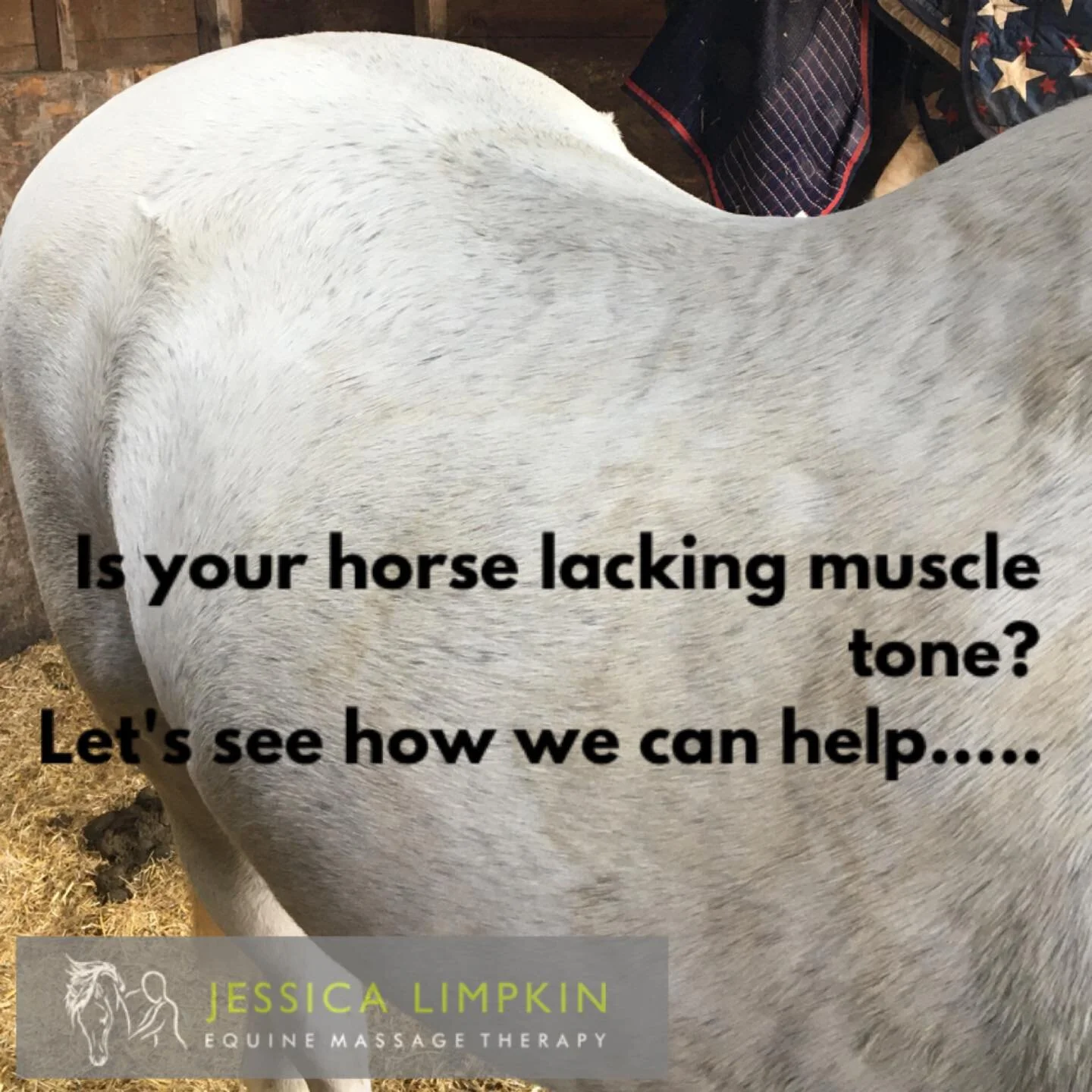Does your horse lack muscle tone? How can we help them?
I have a few client’s horses that I am treating at the moment that have a distinct lack of muscle tone or muscle atrophy for various reasons ❗️
❗️Some due to prolonged box rest which has been necessary to help heal an injury but due to lack of movement has resulted in muscle wastage.
❗️Some due to poor saddle fit which has resulted in restriction of the shoulders and/or back and resulted in muscle atrophy.
❗️Some due to a direct trauma resulting in muscle damage.
🔆This post is inspired by you guys, that have reached out for support to help your horse’s return to their optimum musculoskeletal health, I feel very lucky to have been chosen to help you 🔆
(Please note all these horses have been assessed by their vet and consent to treat has been granted)
🔆I hope this post may also help others who may be having similar issues with their own horses 🔆
So, above are some of the reasons your horse may have decreased muscle tone, but what can we do to help repair and strengthen the tissue and create a healthy structure for your horse?
First here are a few facts about muscle that may be of interest:
▪️The only part of the body that creates movement is muscle
▪️Horses are 42% muscle
▪️Muscle is 80% water and 80% of what is left is protein
▪️To build muscle a horse must be getting sufficient protein
▪️You cannot build/increase muscle mass without exercise
▪️Muscles need to be put under pressure to adapt
To build muscle we need to first look at where the horse is at and be honest about it.
Are they getting the correct diet❓
A healthy horse comes from within.
Ensure your horse is receiving a positive energy balance ➕
This means an excess in feed energy compared with what they need to just ‘be’ as this excess is required to build muscle.
This diet must contain sufficient protein.
Your horse will get most of their protein from grass and hay however the harder you work your horse the more protein they will need so additional feed may be required.
If you are unsure if your horse is on the correct diet I would recommend contacting an Independant Equine Nutritionist for support. If you would like any recommendations on who to contact please PM me and I will happily provide you with some details 📧
Next we need to assess our horse’s physical condition – assuming your horse is otherwise healthy and sound.
If your horse has been on long term box rest we can’t start hard ridden work right away in our muscle building programme, we may need to start very slowly with stable exercises and in-hand walk work.
This is where it is useful to have an experienced therapist on hand to advise you and help devise a suitable exercise plan for your individual horse.
It is also very difficult to honestly assess your own horse (even I enlist the help of a fellow therapist as a second pair of eyes on my horses) 👀
Once you know your starting point and have a plan for the first few weeks you then need to continually assess your horse’s progress to gauge when it is appropriate to increase the workload/decrease the workload/add in additional exercises etc.
Keeping a ‘training diary’ can be a very useful way to monitor what you have been doing with your horse and how they have been coping with the workload. 📔
I often also advise owners to take regular photos of their horses. 📸
Be sure to stand your horse in the same place in the yard/field and take the photos from the same distance so they are truly comparable. 🐴
A common reason for horses not gaining muscle mass or developing asymmetry in their muscles is injury or pain.
Always get your horse assessed by a trained therapist and/or your vet if this is the case.
So now we have our sound and healthy horse, on the correct diet and we know our starting point.
From there the way we will increase muscle is to increase workload.
It is important to only increase one aspect of training at a time:
▪️ Intensity
▪️ Duration
▪️ Frequency
And not to forget the heart is a muscle too that we are also training along with the rest of the body, so taking the time to build our programme slowly is very important to prevent risk of injury to all muscles, including the heart. 💔
Our aim is to load the muscles hard enough to train them without damaging bone, ligament or tendons (Orthopaedic damage) 🦴
I hope this helps explain a little about helping our horses to build and strengthen muscle. 💪🏻
I would like to thank Dr David Marlin, some of the information included in this post was provided during one of his fabulous webinars earlier in the year. 🙏🏻
And how does this all apply to me as an Equine Massage Therapist?
As a therapist I am able to:
▪️Assess your horse’s muscle tone and health
▪️Work to release muscular restrictions
▪️Increase circulation to the muscles to help assist in muscle health
▪️Assist in the removal of toxins from the muscles
▪️Advise on exercises and aftercare specific to my findings during treatment
If you think your horse could benefit from Equine Massage Therapy please do get in touch to find out more or to book an appointment 📲

